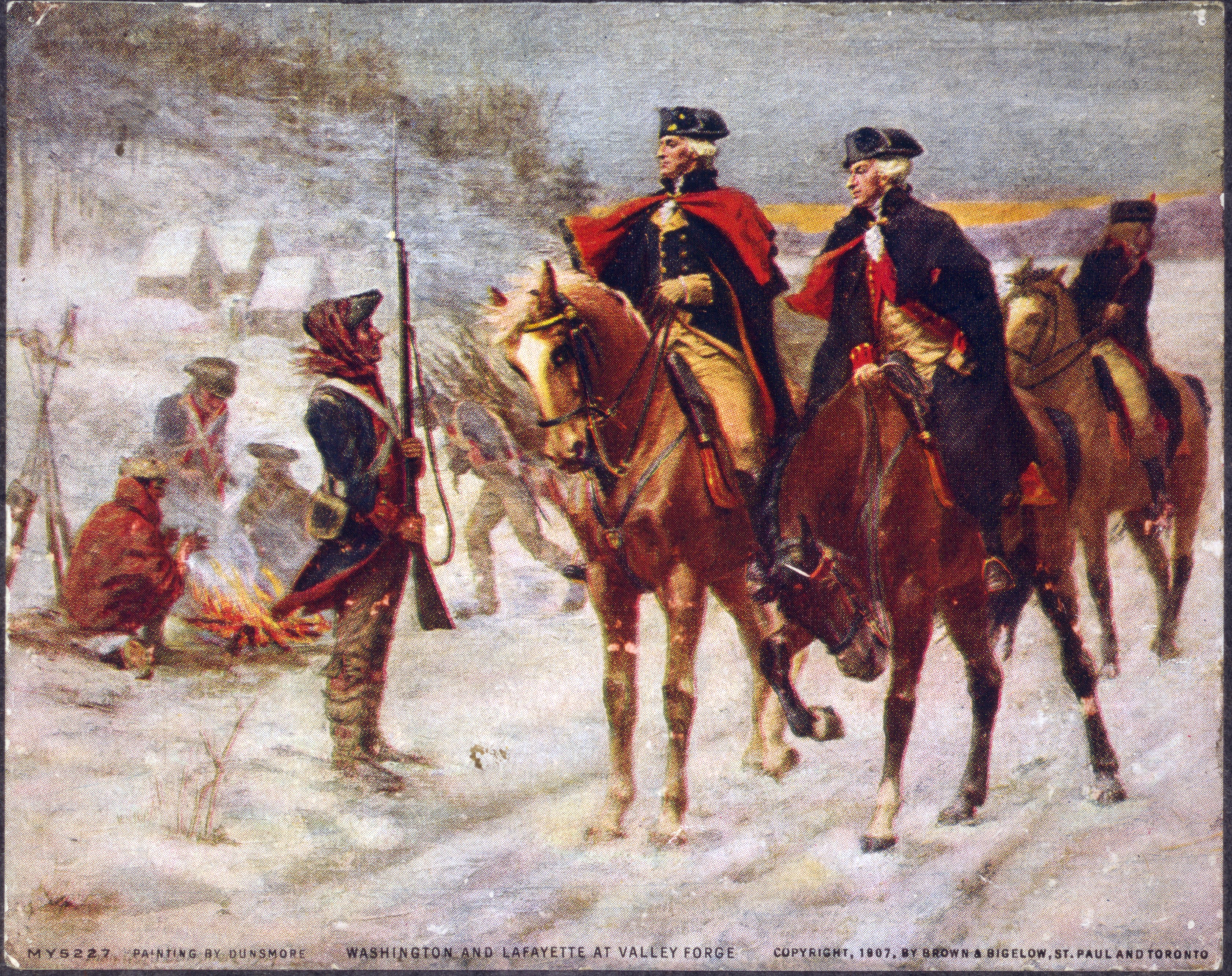
Valley Forge
Valley Forge was the winter encampment of the Continental Army, under the command of George Washington, during the American Revolutionary War. The Valley Forge encampment lasted six months, from December 19, 1777 to June 19, 1778. It was the third and harshest of the eight winter encampments that Washington and the Continental Army endured during the war.
This article is about the American Revolutionary War winter encampment. For other uses, see Valley Forge (disambiguation).
Three months prior to the encampment at Valley Forge, in September 1777, the Second Continental Congress was forced to flee the revolutionary capital Philadelphia to escape what they perceived was an imminent British attack on the city following Washington's defeat in the Battle of Brandywine, a key battle during the British Army's Philadelphia campaign, which sought to capture Philadelphia.
Unable to defend Philadelphia, Washington led his 12,000-man army into winter quarters at Valley Forge, located approximately 18 miles (29 km) northwest of Philadelphia.[1][2][3]
At Valley Forge, the Continental Army struggled to manage a disastrous supply crisis while simultaneously retraining and reorganizing their units in an effort to mount successful counterattacks against the British. During the encampment at Valley Forge, an estimated 1,700 to 2,000 soldiers died from disease, possibly exacerbated by malnutrition.
In 1976, in recognition of the enormous historical significance of Valley Forge in American history, Valley Forge National Historical Park was established and named a national historic site, which protects and preserves over 3,500 acres of the original Valley Forge encampment site. The park is a popular tourist destination, drawing 1.3 million visitors in 2011.[4][5]
French alliance[edit]
Initially, France remained reluctant to directly involve themselves in the war against Great Britain. In part, they worried that revolutionary fervor might spread into their own empire (which it did by 1789), but they also did not think the American colonists could win. However, the October 1777 surrender of British General John Burgoyne's army at Saratoga won for Americans the assistance they needed from other foreign powers.[64] France and the United States subsequently signed a treaty on February 6, 1778, creating a military alliance between the two countries. In response, Great Britain declared war on France five weeks later, on March 17.
On May 6, having already received word of the French alliance, Washington ordered the Continental Army to perform a Grand Feu de Joie, a formal ceremony consisting of a rapid and sequential firing of guns down the ranks. Continental officer George Ewing wrote that "the troops then shouted, three cheers and 'Long live the King of France!' after this…three cheers and shout of 'God Save the friendly Powers of Europe!'…and cheers and a shout of 'God Save the American States!'"[65] Each soldier received an extra gill of rum (about four ounces) to enjoy that day, and after the troops' dismissal, Washington and other officers drank many patriotic toasts and concluded the day "with harmless Mirth and jollity."[65]
As empires, both France and Great Britain had territory around the world that required protection. Sir Henry Clinton replaced General Sir William Howe as British Commander-in-Chief of Land Forces in North America, and had to divert troops from Philadelphia to the Crown's valuable possessions in the West Indies. The British also feared a French naval blockade of Philadelphia, leading Clinton to abandon it for New York City, a loyalist stronghold.
On June 18, Washington and his troops marched after them, with the remainder vacating Valley Forge one day later, exactly six months after the Continental Army arrived in Valley Forge.